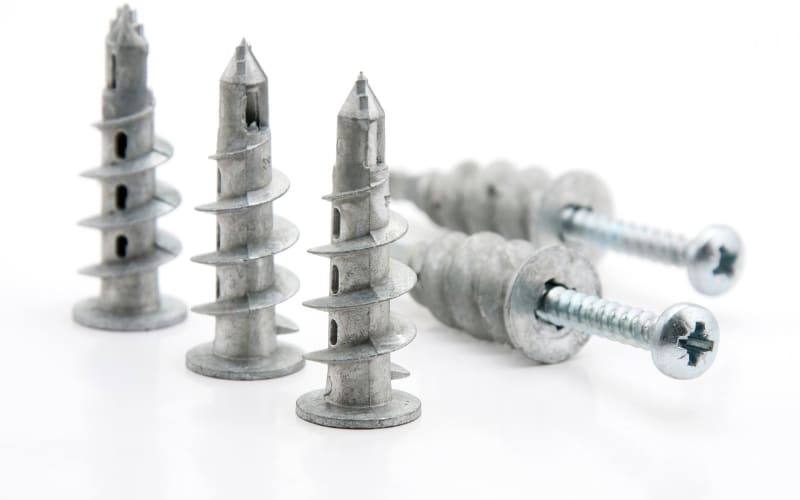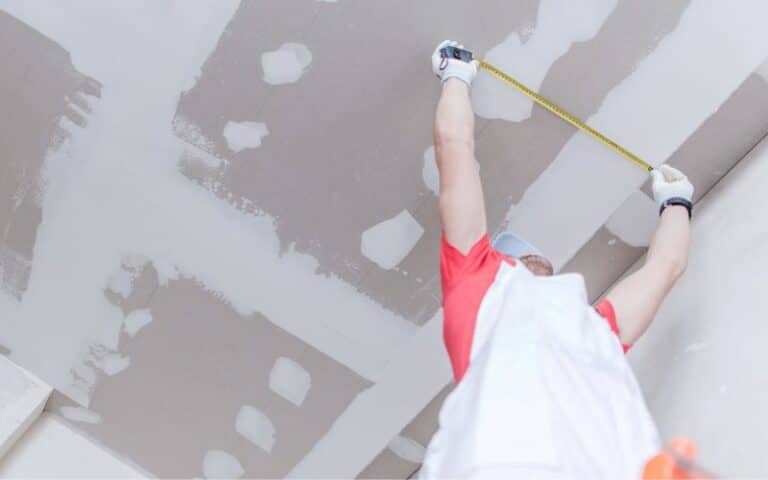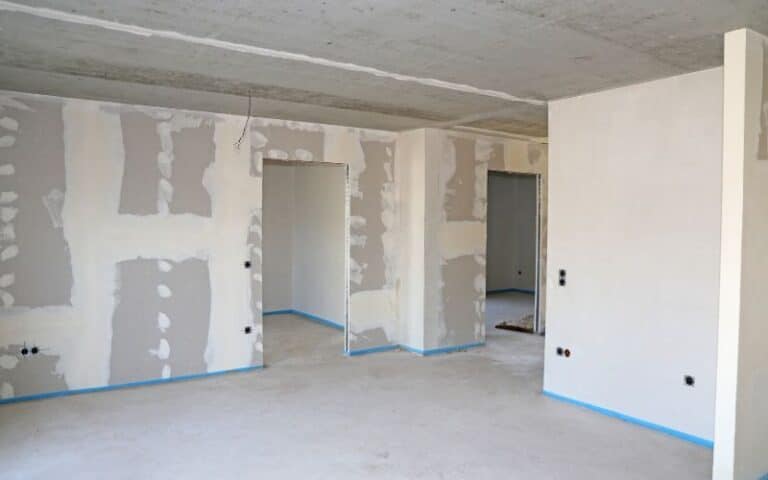Hanging items on drywall can be very tricky. That’s why anchors come in handy. You can use them for wall shelves, pictures, towel bars, and cabinets.
Despite the ease of installation, drywall anchors sometimes go through the wall instead of being flush with it. When that happens, removing the anchors from the drywall is usually not easy.
First, remove any screws attached to the drywall anchor and firmly grip the inside of the wall anchor using needle-nosed pliers. Next, grab the drywall collar and tug it very gently. The drywall anchor will most likely emerge from the hole once you gently pull it from the drywall.
This article explains why drywall anchors may go through the wall and what to do if that happens.
Ready for a Drywall Quiz?
Why Does Drywall Anchor Pull Out Through Wall?

To install drywall anchors, you need to ensure you’re using the right type of anchor. You also need to make sure that the pilot holes for installing the anchor are the right size.
Also, the material must be stable enough to hold the anchor. If anything is off, the drywall anchor will pull through the wall.
To prevent that, you should know what makes drywall anchors pull through the wall.
#1. Extra-large Holes
You have to make pilot holes before you put in your drywall anchor. Once you make the holes and put in the anchor, the anchor does not enlarge to fill any remaining spaces.
So, If the holes are too big, the anchor will pull out through the wall. On the other hand, plastic anchors usually have tapered, so it’s best to make the holes smaller than the anchor.
If the anchor slides in easily, the hole will likely be oversized. Additionally, some manufacturers put lip collars at the end of the plastic anchors.
These collars prevent the anchor from pulling out through the wall. So, always make the hole smaller than the anchor collar.
#2. The Drywall is Unstable
If the drywall you’re using the anchor on isn’t stable enough, it will not be able to hold down the anchor and slip through the wall.
That is especially common with old drywall or drywall affected by water or moisture. Once the anchor is in and you put the screw, the drywall crumbles around the anchor.
The falling drywall allows the anchor to go through the wall because nothing is holding it.
#3. The Anchor is Carrying Excess Weight
You may have placed excess weight on the drywall anchors. The drywall needs to be thick enough to carry heavy loads.
It may come loose if you apply excess weight on a single point on the anchor.
#4. Incorrect Anchor Screw Size
If the screw you use is too small, the anchor won’t expand sufficiently to bite into the wall. Also, if the screw is large, it will cause damage to the anchor and the surrounding drywall.
What to Do When Drywall Anchor Goes Through Wall?
If a drywall anchor goes through the wall, you’ll have to remove it and patch it up before attempting to replace the damaged anchor with another, more suitable anchor.
Remember that if drywall goes through the wall, you can’t use the drywall anchor again, and you’ll have to make another hole to put in the new drywall anchor.
If you made a large deep hole in the drywall, you must patch it up completely before installing any other drywall anchor.
Here’s how.
- Measure the hole depth with a screwdriver or a coat hanger, whichever is readily available.
- If the hole is deep, push some plastic wood or any other wood filler into the hole until it is full. Or you can use a patching compound to fill the hole.
- If you use wood fillers, you’ll have to use a patching compound to patch the drywall.
- Rub some of the patching compounds on the covered-up hole with a little excess on the top.
- Once the compound completely dries, sand it down so the surface is smooth.
You can also choose to fix the drywall anchor instead of removing it and closing the hole in the wall.
You can use hot mud joint compound to help squeeze in the gaps in the drywall and still use the same holes for your drywall anchor.
Here’s how:
- First, mix the compound with a quarter cup of water, then add the joint compound to the water.
- Mix the compound and the water thoroughly until it forms a thick paste.
- Next, put the paste inside the drywall hole. Do this very quickly because the paste will dry up within a short time. Then put the anchor and screw inside the hole.
- When you finish, wait for the joint compound to dry completely.
How Much Weight Do Drywall Anchors Support?
Drywall anchors can hold between 25-300 lbs of weight. So, whatever you want to hang, you can find the right drywall anchor to suit your needs.
Before you put up drywall anchors to hang your diploma or painting, you should know how much weight your drywall anchor can take.
If you hang excess weight on the anchor, it could damage the drywall.
It would help if you also kept in mind that there are different types of drywall anchors and each drywall anchor has a different weight capacity.
So, getting the anchor that suits your needs is always preferable.
#1. Simple Threaded Drywall Anchors
Simply threaded drywall anchors hold between 25-75 lbs on the wall. Also, threaded drywall anchors are sturdier and stronger than regular expansion drywall anchors.
Think of threaded drywall anchors when you want to hang your heavy diploma frame on your wall.
#2. Expansion Anchors
Expansion anchors are the least sturdy drywall anchors and hold very little weight. When you hang them on the drywall, expansion anchors can carry between 5-20 lbs.
It’s best to be very careful with expansion drywall anchors because sometimes manufacturers use cheap materials to make them which makes the quality below par.
#3. Metal Toggle Anchors
Toggle anchors can safely hold up to 150 lbs weight. They pierce into the sheet of drywall, then a pair of wings open up at the back.
When you insert the screw, the toggle anchors pull the wings securely to the back.
This mechanism provides great holding power and makes it easier for the anchor to hold much more weight than other anchors. Specialized toggle anchors can hold as many as 300 lbs.
So, it’s always best to know the weight you want to hang to choose the anchor that best suits you.
The table below shows the types of anchors and their weights:
| Drywall Anchors | Weight |
|---|---|
| Molly Bolt Wall Anchors | 25-50 lbs |
| Specialized heavy-duty anchors | 300lbs |
| Plastic wing anchors | 20lbs |
| Metal wing anchors | 100-150 lbs |
Should You Use a Hammer For Drywall Anchors?
You don’t have to use a hammer for every drywall anchor. You can install some drywall anchors without a hammer, and you’ll need a hammer for others.
The type of drywall anchor you’ll need to use a hammer for is the sleeve anchor. The idea is that the hole you make for the anchor should be manageable.
The hole should be smaller in diameter than the anchor. That way, you will need to gently knock it with a hammer so that it goes in completely.
If you have to make a pilot hole before installing a drywall anchor, you should use a hammer to drive the anchor into the hole securely.
But for drywall anchors that don’t require a pilot hole, you can install the anchor without using a hammer.
In addition, even when you’re using hammers to install your drywall anchors, only hammer the anchor gently; otherwise, you’ll damage the wall and the sleeve anchors.






